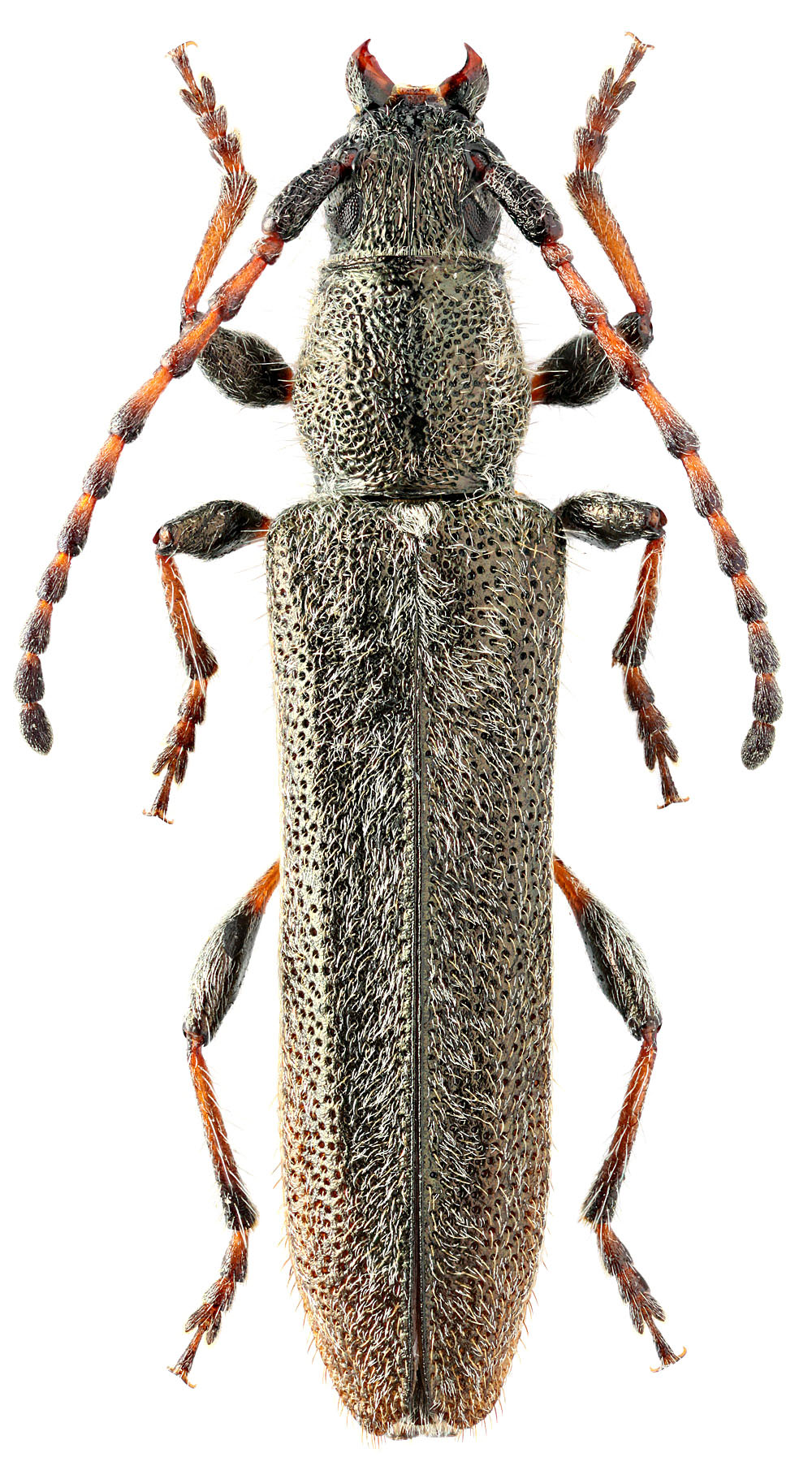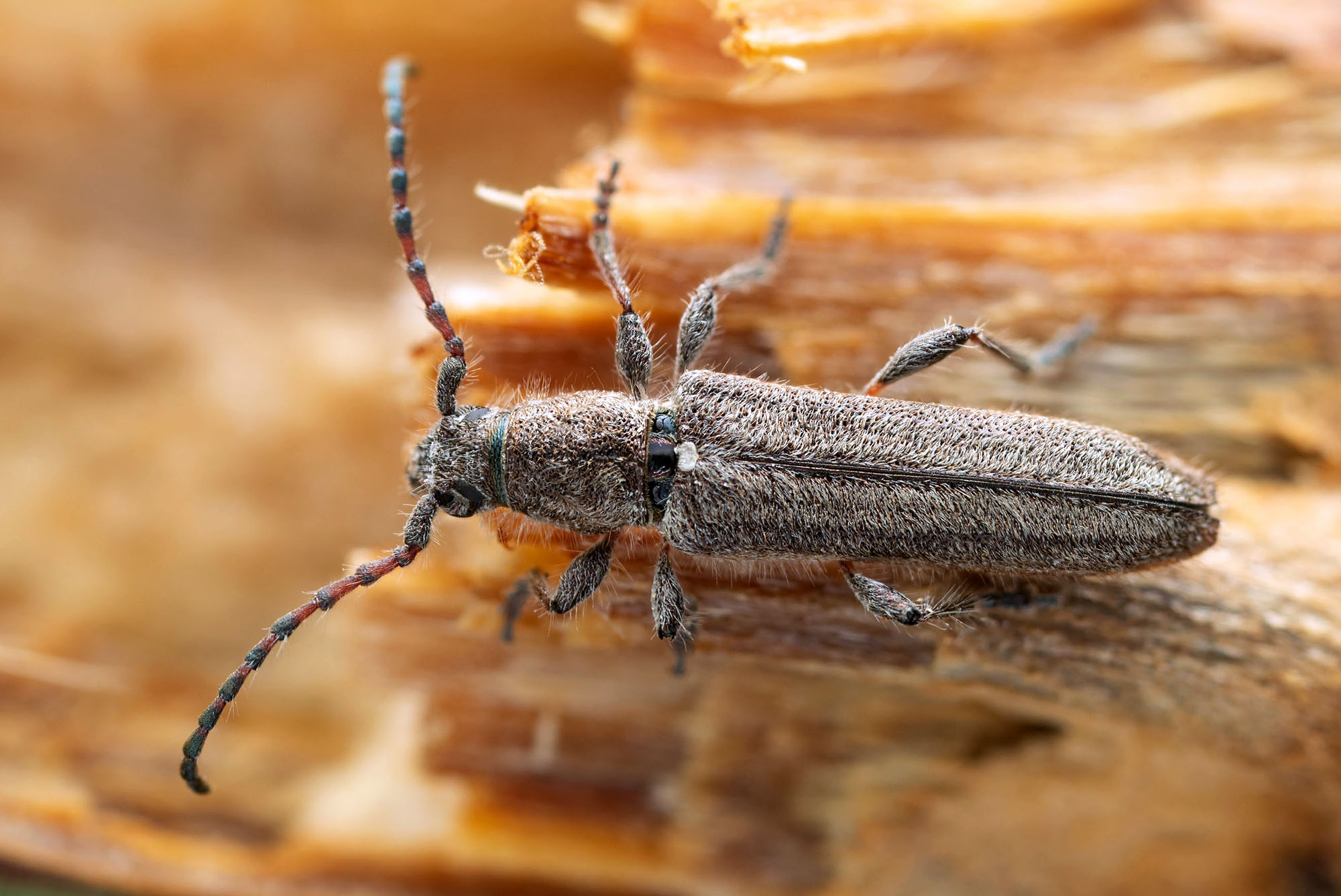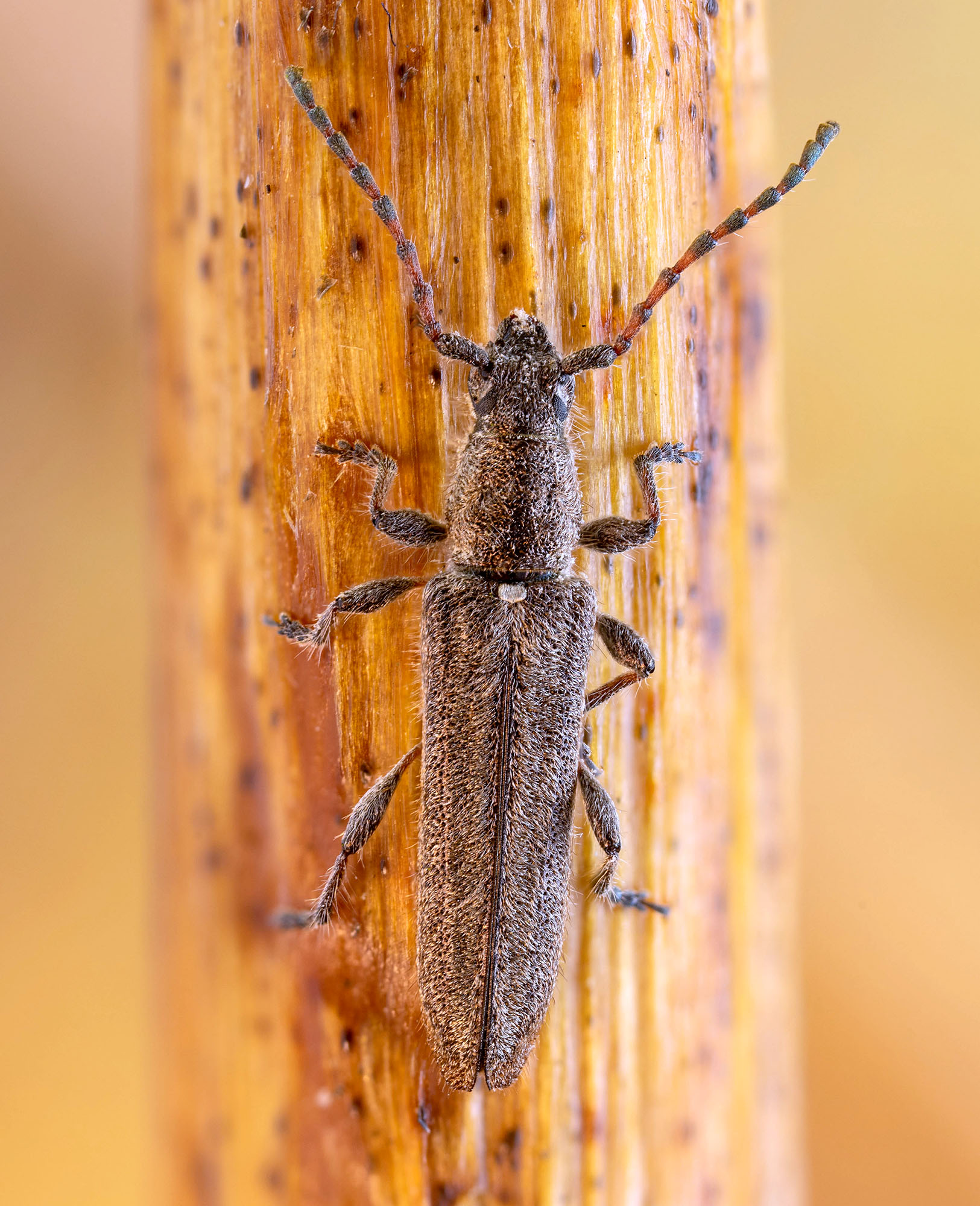
[Photo © Maxim E. Smirnov]
|
Deilus fugax, a species with large area of occurence (Europe except North, North Africa, Near East, Asia Minor), has been described form Provence as Callidium fugax by
Guillaume-Antoine Olivier in 1790 [▽]. D. fugax larvae develop under the bark of thin twigs (1-2 cm) of shrubs from the Fabaceae family (Sarothamnus, Cytisus,
Spartium etc.). Larvae later enter the wood, where they create pupal cells. The entrance/exit holes larvae clogg by frass. Life cycle from one to three years, the lenght of the
development period depends on climatic conditions at the locality. Adults, active from May to July, are diurnal and can be found on the various flowers or beaten from the host plants.
| Body length: | 6 - 11 mm |
| Life cycle: | 2 years |
| Adults in: | March - September |
| Host plant: | polyphagous in Fabaceae shrubs (Sarothamnus, Cytisus, Spartium etc.) |
| Distribution: | Algeria, Libya, Morocco, Tunisia, Albania, Austria, Belarus, Belgium, Bulgaria, Corsica, Croatia, Czechia, France, Greece, Hungary, Italy, Poland,
Portugal, Romania, Russia, Sardinia, Serbia, Slovakia, Slovenia, Spain, Switzerland, Israel, Jordan, Kazakhstan, Lebanon, Syria, Turkey |
The depicted mounted male beetle was collected on flowering Spirea in Guberlya (Губерля) village environs (Orenburg oblast, Volga Federal District, Russia) on May 18, 2005.
The living specimen was reared from larva found in Calicotome twig in Hammamet (حمامات) environs (Nabeul Governorate, Tunisia) in 2019.
Collected by A.Shapovalov and Roman Rejzek.
[▽]
Olivier G.-A.:
Encyclopédie Méthodique. Histoire Naturelle. Insectes.
Panckoucke Libraire, Paris 5 (1): 368pp, 1790.
[download  ] ]
|




